What is Cosmos (ATOM)?
Interoperability or the ability to communicate across different blockchain networks is a major challenge faced by most cryptocurrencies today. Users want the flexibility to move their assets across multiple blockchains with ease, but currently, doing so comes with high transaction fees and complicated procedures. Fortunately, blockchain networks like Cosmos are addressing this issue by incorporating interoperability at the core of their network.
Introduction
Cosmos is a decentralized network of interconnected blockchains that operate independently within a single ecosystem, often referred to as the ‘internet of blockchains’. Imagine Cosmos as a massive galaxy with hundreds of blockchains as its planets. Cosmos solves the interoperability problem by providing a software development kit (SDK) for developers to create a blockchain on the Cosmos network, which ensures compatibility within a shared ecosystem. This allows developers to focus on building decentralized applications (DApps) without having to create a blockchain from scratch.
The Cosmos Network is a decentralized and scalable network of interoperable blockchains, each powered by a Byzantine Fault-Tolerant (BFT) consensus algorithm like Tendermint Core. It aims to address three key challenges in blockchain: sovereignty, scalability, and sustainability.
Cosmos embraces a multi-chain world where multiple autonomous blockchains can interact with one another seamlessly, promoting a collaborative ecosystem where no blockchain competes with another. Cosmos bridges all these blockchains together, allowing them to communicate data and tokens with ease.
What is ATOM?
As the governance token of Cosmos Hub, ATOM serves as a means to run services on the Cosmos network. Unlike in Proof-of-Work (PoW) networks, ATOM tokens are not mined through computational power. Instead, nodes are rewarded based on the number of ATOM tokens they have staked. The more ATOM tokens a node stakes, the greater the rewards it receives.
Staking ATOM tokens involves locking them up for a specific period to enable the network to utilize them for security purposes. After the staking period, the tokens are returned, and an additional reward is given as an incentive to continue staking. Dishonest nodes can be penalized, leading to the loss of ATOM tokens.
Another important use of ATOM is in powering the participation of validator nodes. To become a validator in the Cosmos network, a participant must stake ATOM and rank in the top 100. Validator nodes in the top 100 earn the right to vote on changes in the network, and the voting power is proportional to the amount of ATOM staked.
Cosmos Hub ecosystem, which was initially distributed through an ICO in 2017. Holding ATOM allows users to participate in network activities such as staking, block validation, voting on improvement proposals, and transaction fee payment. The token’s standard is supported on various blockchains, including ERC-20, BEP-20, and Cosmos.
During the launch of the Cosmos Hub mainnet, tokens were distributed to donors, token sale participants, the Cosmos foundation, and core developers. Now, ATOMs are generated as rewards for network validators.
Tokenomics
The current tokenomics of ATOM has a major shortcoming in the form of inflationary issuance that doesn’t provide much value accrual to the token.The solution proposed in the whitepaper involves a new issuance model, which will gradually decrease the number of tokens minted over time.
This process will occur in two phases. In the first month, 10 million ATOM will be released, which will then gradually decrease over the next 36 months. Eventually, the issuance will stabilize at an equilibrium of 300,000 ATOM per month.
Two-thirds of the newly issued ATOM tokens will go towards the Cosmos treasury to support initiatives that increase adoption, growth, and capitalization of the interchain. Additionally, a portion of the transaction fees will also go towards the Cosmos treasury, creating a positive flywheel effect where treasury growth and token value growth fuel each other. Ultimately, this is intended to establish ATOM as the interchain reserve currency.
Initial ATOM supply
The distribution of Cosmos coin began in 2017, with 80% of the coins going to investors on release and nearly 20% to the founders and project. The overall supply is inflationary, but with a twist: the rate of inflation varies between 7% and 20%. If more Cosmos is staked, the inflation rate drops to 7%, but if staking falls below two-thirds of the circulating supply, the inflation rate can rise to 20%. As a result, market participants are incentivized to stake more ATOM coins to reduce inflation.

Cosmos supply: Messari
Currently, the top 100 ATOM holders control 99.39% of the supply, making the coin vulnerable to market-wide sell-offs. In response, the Cosmos network is exploring new tokenomics to address this issue and promote wider distribution.
ATOM Token distribution:
- 67.9% for fundraisers.
- 10% for All in Bits, Inc (Tendermint).
- 10% for Interchain Foundation (ICF).
- 7% strategic reserves.
- 5.1% for seed investors.

Source: The Tie Research
As of now, the circulating supply of ATOM is 286,370,297, and there is no fixed supply limit. This is because newly minted ATOM tokens are used to reward stakers, and the inflation rate adjusts according to the amount of coins staked and the number of stakers. In summary, ATOM is an inflationary coin.
How Does Cosmos Work?
Cosmos networks are comprised of three significant layers:
- Application layer: This layer defines the state and state-transition function of the blockchain software.
- Hubs and networking: This layer facilitates cross-chain communications and interactions among different blockchains to enable transactions.
- Consensus: This layer helps to ensure that the network reaches an agreement among all the participating nodes.
Developers can easily build applications on the Cosmos network by combining these layers. However, this is only achievable with outsourcing tools like the Tendermint Byzantine Fault Tolerance (BFT) engine. BFT is a Proof-of-Stake governance mechanism that acts as the backbone of the Cosmos network, keeping the distributed network working in sync with Cosmos Hub.
The network reaches a consensus between all the blockchains in the Cosmos network connected through the IBC protocol using the Tendermint BFT algorithm. This allows separate blockchains to communicate with the Ignite CLI using the Application Blockchain Interface (ABCI), enabling developers to build DApps on different programming languages without developing them from scratch. ABCI serves as a bridge between the Ignite CLI and the Cosmos software development kit (SDK), which lets developers build projects on the Cosmos network. These systems interoperate and connect to the Cosmos Hub, the main component of the Cosmos network.

Source: Medium
Cosmos, a PoS network, uses peg zones to connect with PoW networks such as Ethereum’s. Peg zones are bridge-like systems that provide a solution to PoW networks that do not have fast finality. Ethereum’s smart contracts make it easy to create a finality threshold and communicate contracts in the pegging zone, linked to Tendermint Core using ABCI. However, connecting Bitcoin with Cosmos is more complicated than connecting Ethereum due to Bitcoin’s lack of smart contracts.
Unlike Ethereum, the Cosmos SDK provides simple tools for developers without any sovereignty issues. Developers creating a DApp in Ethereum have to follow certain rules and regulations set by the Ethereum network, which is not the case with Cosmos.
Why is Cosmos Unique?

Source: Zach Segal on Twitter
Cosmos stands out from other blockchain ecosystems thanks to its open-source tools such as Tendermint BFT, Cosmos SDK, and IBC. These tools have shown their capabilities in addressing scalability, usability, and sovereignty limitations outlined in the Cosmos Whitepaper.

Tendermint, which is a solution on Cosmos, provides ready-made generic engines that bundle networking and consensus. This allows developers to focus on application development, and state machines can be built on top of Tendermint with any programming language.
The Cosmos SDK is a framework that simplifies blockchain application development with modularity and capabilities-based security.
The Inter-blockchain Protocol (IBC) connects different blockchains for data or token transfers.
To further optimize the system, Cosmos has created a unique hub and spoke model that allows blockchains to connect based on two types: hubs and zones.

Hubs are blockchains that act as a point of connection for heterogeneous blockchains called zones. This results in an architecture where zones have specific connections to hubs rather than multiple connections to other zones. Additionally, any blockchain like Bitcoin or Ethereum can connect to the hubs through pegged zones. The Cosmos Hub, the first hub launched on the Cosmos ecosystem, is a proof-of-stake blockchain with the native token Atom.
Cosmos 2.0
At the Cosmosverse conference in Colombia in September 2022, Cosmos unveiled its Cosmos 2.0 white paper, which lays out a three-year roadmap for significant changes to the Cosmos ecosystem. The plan aims to enhance the Cosmos Hub’s utility, improve tokenomics, and address shortcomings in the current system.
The white paper outlines four key innovations:
- Liquid staking
- Interchain security
- Interchain scheduler
- Interchain allocator
These innovations will contribute to the growth of a resilient interchain economy, with the Cosmos Hub playing a crucial role in securing and capitalizing critical apps in the ecosystem while acting as an entry point and communication center.

The Cosmos 2.0 whitepaper launch initially caused a surge in ATOM’s price, but the proposal was ultimately rejected due to its scale. Some community members preferred a more incremental approach to implementing the listed development features, starting with Interchain Security in Q1 2023.
Interchain Security is expected to enhance the value of ATOM as a modular chain, enabling new blockchains to borrow security from it and pay Cosmos Hub validators.
Despite the proposal’s rejection, the Cosmos team is still working on implementing the upgrades outlined in the whitepaper. The other tokenomics improvements will be proposed separately to the Cosmos community.
The Bottom Line
To sum up, Cosmos is a popular solution for creating interoperable blockchains with powerful tools like Tendermint (BFT) and Cosmos SDK. While more focus is on side chains for high-traffic blockchains, Cosmos plans to expand on current trends such as NFTs and DeFi collateralization. The ecosystem solves scalability and sovereignty issues while connecting different blockchains. With the recent technical breakout in ATOM’s price, it is clear that the market sees the potential in the Cosmos Network, and it will be exciting to see how this technology continues to evolve and impact the blockchain industry in the years to come.








